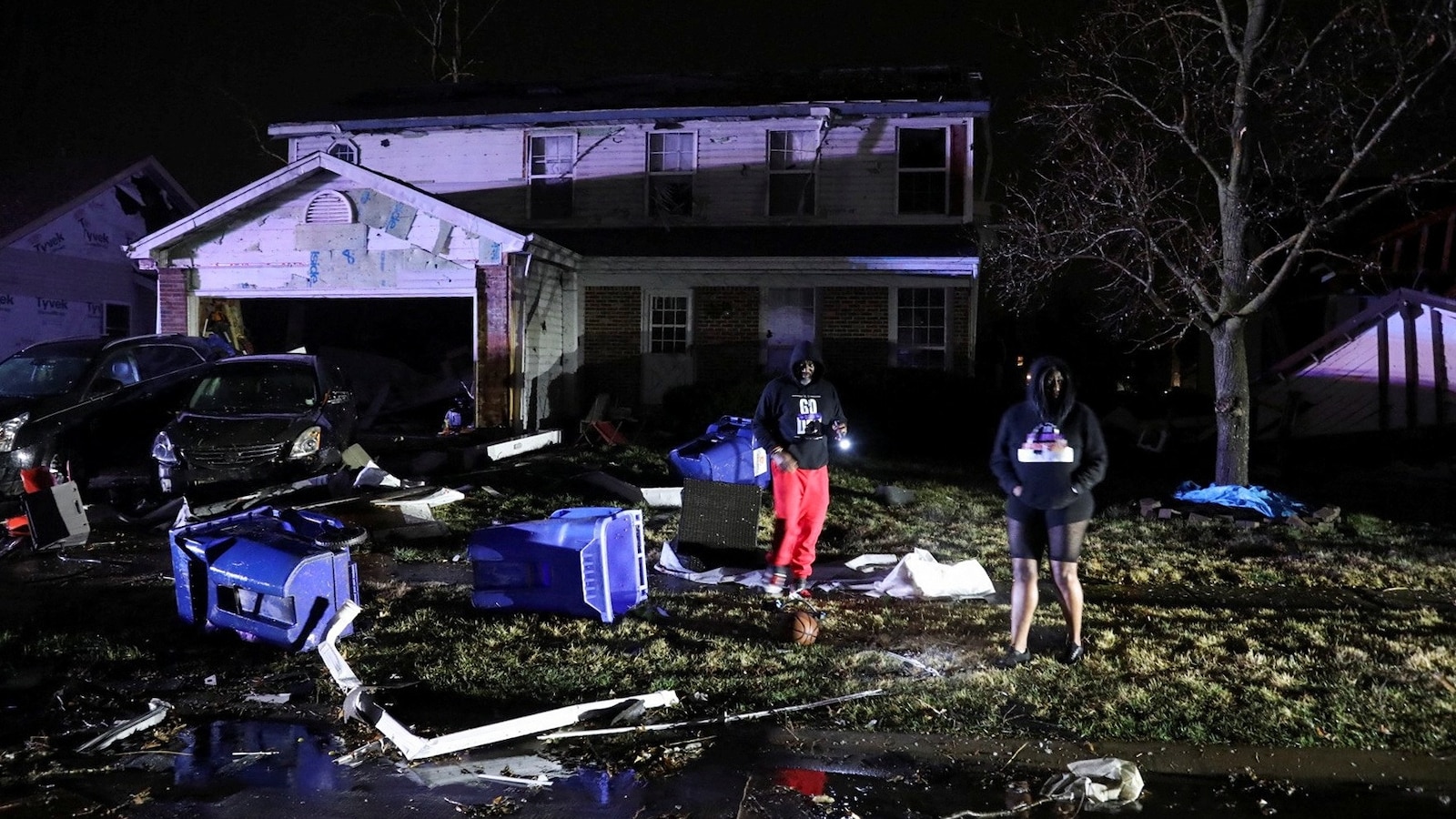Midwest Storms Claim Lives: Understanding the Impact and Recovery Efforts
A series of severe storms have recently swept through the Midwest, leaving a trail of destruction and at least 13 fatalities in their wake. These extreme weather events have not only claimed lives but have also significantly affected communities, infrastructure, and local economies. This article delves into the devastating effects of these storms, the stories of resilience from affected areas, and the ongoing recovery efforts that aim to rebuild what has been lost.
The Unfolding of the Storms
In the past weeks, meteorologists had been warning residents about the potential for severe weather in the Midwest. As the storms unleashed their fury, high winds, torrential rain, and hail battered several states, including Illinois, Indiana, and Missouri. Tornadoes touched down in various locations, causing widespread destruction and loss of life.
The National Weather Service reported that wind speeds reached up to 130 mph in some areas, uprooting trees, demolishing homes, and disrupting power for thousands. Emergency services were quickly dispatched to assist those in distress, but the sheer intensity of the storms overwhelmed local resources.
The Human Toll: Lives Lost and Lives Changed
Among the 13 fatalities reported, each story represents a life cut short and a family left to grapple with unimaginable loss. Communities rallied around the victims’ families, offering support and condolences. The emotional toll of such tragedies can be profound, as survivors navigate the aftermath of grief.
- First Responders: Firefighters, police, and medical teams worked tirelessly to rescue those trapped and provide aid to the injured. Their bravery and dedication were evident as they faced the elements to save lives.
- Community Resilience: Neighbors came together, forming volunteer groups to assist with cleanup efforts, providing food and shelter to those displaced.
As the storms subsided, the focus shifted to recovery. Local leaders emphasized the importance of community support, urging residents to help one another as they begin to heal.
Infrastructure Damage: A Long Road to Recovery
The physical destruction caused by the storms was staggering. Buildings were reduced to rubble, roads were blocked by fallen trees, and power lines were downed, leaving entire neighborhoods without electricity. The rebuilding process will be long and costly, with estimates in the millions for repairs and restoration efforts.
- Homes: Many families lost everything, and finding temporary housing has become a priority.
- Businesses: Local businesses faced significant losses due to damage and disruption, impacting the local economy.
- Infrastructure: Roads, bridges, and public transportation systems require urgent repairs to ensure safety and accessibility.
Government agencies, along with non-profit organizations, have mobilized to provide assistance. FEMA has been activated to help with disaster relief, offering financial aid to individuals and families affected by the storms.
Weather Patterns: Understanding the Cause
The Midwest has long been known for its volatile weather, with the tornado season typically peaking in the spring. However, climate change has intensified these weather patterns, leading to more frequent and severe storms. Understanding the science behind these changes is crucial in preparing for future events.
Research indicates that warmer temperatures can increase the amount of moisture in the atmosphere, leading to more intense storms. As climate change continues to evolve, it is essential for communities to adapt and prepare for the possibility of extreme weather.
Preparing for Future Storms: Lessons Learned
The devastation caused by these recent storms has sparked conversations about preparedness and resilience. Many communities are now reevaluating their disaster response plans, focusing on how to better protect citizens and infrastructure.
- Community Education: Providing residents with information about emergency preparedness can save lives. Workshops and training sessions can empower individuals to take action when severe weather strikes.
- Building Codes: Implementing stricter building codes can help ensure that new structures are more resilient to extreme weather.
- Early Warning Systems: Investing in advanced weather monitoring and alert systems can provide crucial time for communities to prepare.
Looking Forward: Hope Amidst the Destruction
Despite the overwhelming loss and destruction, stories of hope and resilience abound in the wake of the storms. Communities are coming together to rebuild, showcasing the strength of the human spirit. Local leaders are advocating for better infrastructure and support systems, ensuring that lessons learned will contribute to safer futures.
As recovery efforts continue, the focus will also be on mental health support for those affected. The emotional scars left by such tragedies can linger, and providing accessible mental health resources is essential for long-term healing.
Conclusion
The recent Midwest storms have claimed lives and caused significant destruction, but they have also highlighted the incredible resilience of communities. As recovery efforts unfold, it is vital to remember the lessons learned and to work towards a future where preparedness and support systems are prioritized. With a collective effort, communities can rise from the ashes of these storms, stronger and more united than ever.
As we reflect on the impact of these devastating storms, let us not forget the lives lost and the communities forever changed. Together, we can honor their memories by building a safer, more resilient future.
See more Your Daily Weather



